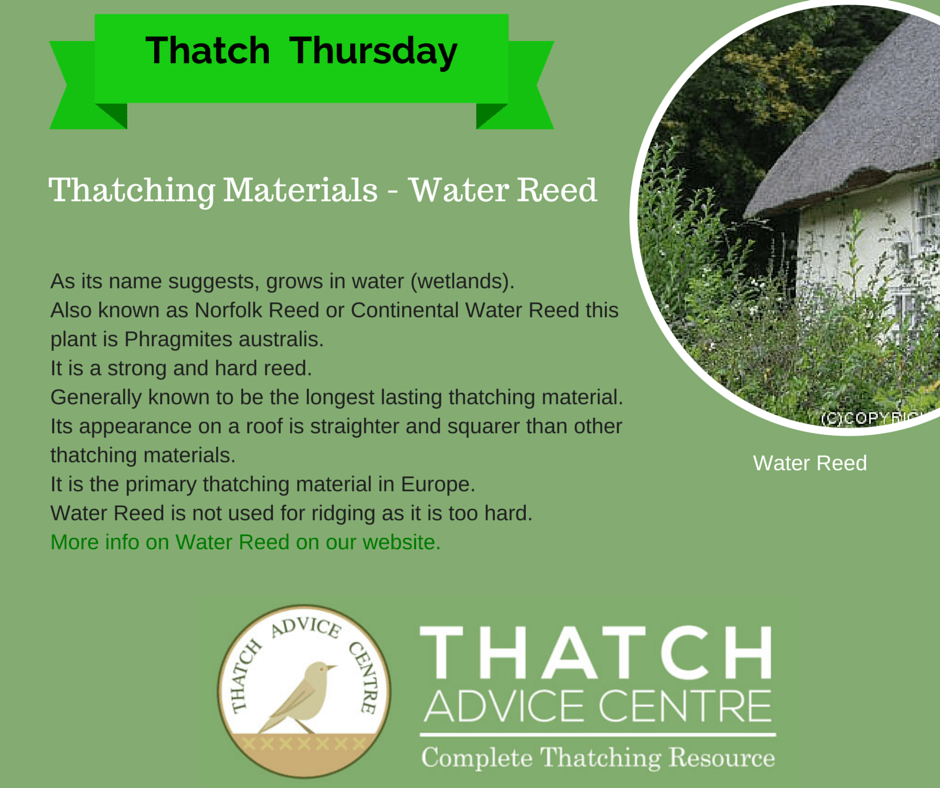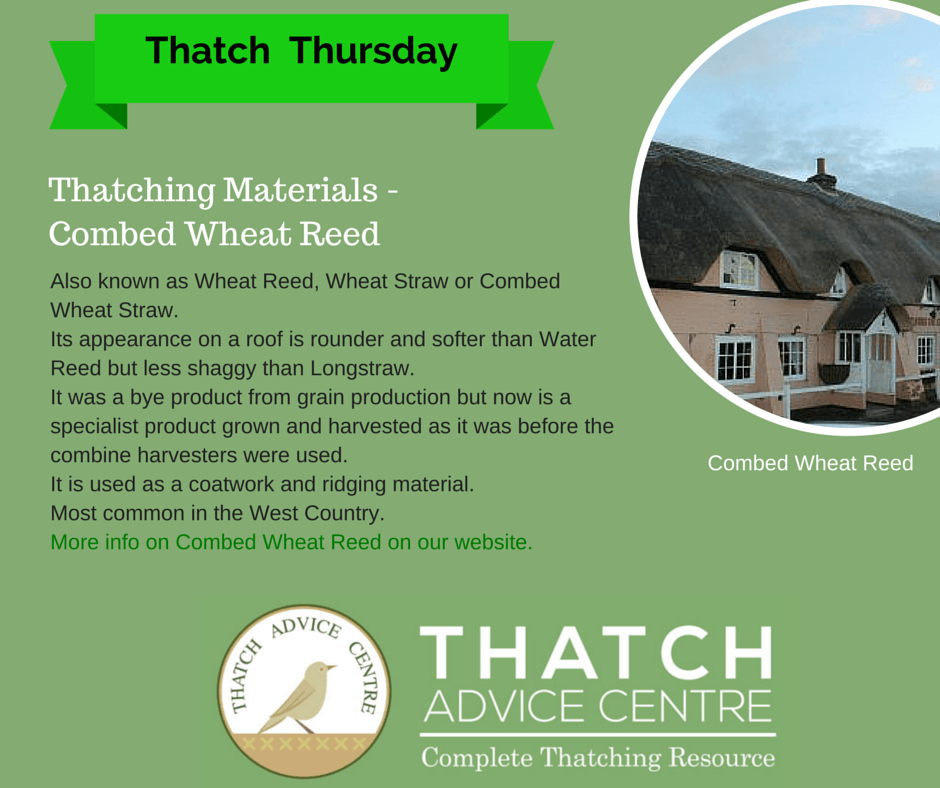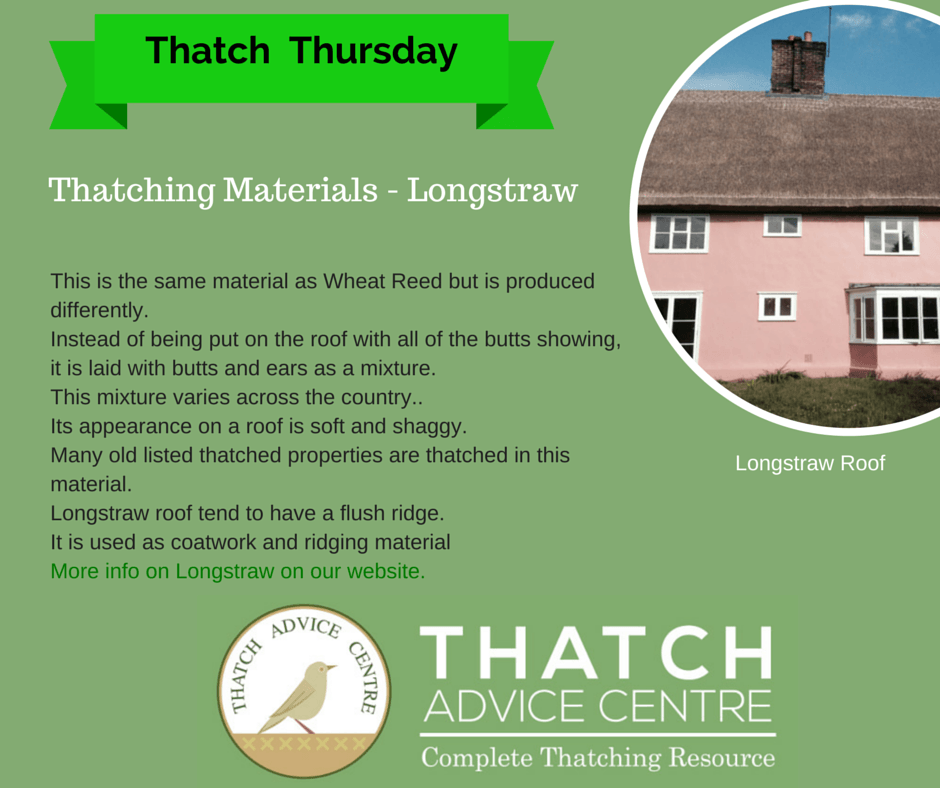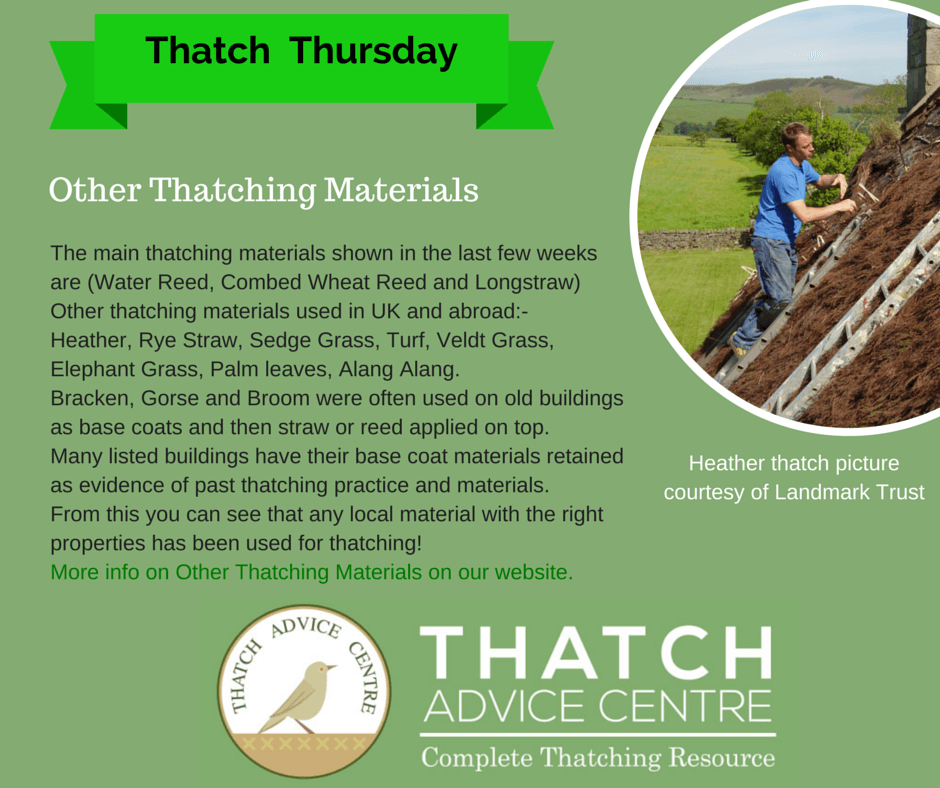Water Reed
As its name suggests, grows in water (wetlands). Also known as Norfolk Reed or Continental Water Reed this plant is Phragmites australis.
It is a strong and hard reed.
Generally known to be the longest lasting thatching material. Its appearance on a roof is straighter and squarer than other thatching materials.
It is the primary thatching material in Europe. But it is not used for ridging as it is too hard.
Combed Wheat Reed
Also known as Wheat Reed, Wheat Straw or Combed Wheat Straw.
Its appearance on a roof is rounder and softer than Water Reed but less shaggy than Longstraw.
It was a bye broduct from grain production but now is a specialist product grown and harvested as it was before the combine harvesters were used. It is used as a coatwork and ridging material. Wheat Reed is most common in the West Country.
Longstraw
This is the same material as Wheat Reed but is produced differently.
Instead of being put on the roof with all of the butts showing, it is laid with the butts and ears as a mixture. This mixture varies across the country. Its appearance on the roof is shaggy and soft.
Many old listed properties are thatched in this material. Longstraw roofs tend to have a flush ridge. Longstraw is also used as a coatwork and ridging material.
Other Thatching Materials
The main thatching materials that have been shown in the last few weeks are (Water Reed, Combed Wheat Reed and Longstraw). Other thatching materials used in the UK and abroad include: Heather, Rye Straw, Sedge Grass, Turf, Veldt Grass, Elephant Grass, Palm Leaves, Alang Alang.
Bracken, Gorse and Broom were often used on old buildings as base coats and then the straw or reed was applied on top.
Many listed buildings have their base coat materials retained as evidence of past thatching practice and materials. From this you can see that any local material with the right properties has been used for thatching.
Ridges
The top part of the roof, the ridge, may be thatched in a flush or block style. Latter may also be patterned or straight. Maintenance of the ridge is usually more often than the main coatwork as it takes more of the brunt of the weather.
Ridges may last 10-15 years depending on several variable factors. Signs that maintenance is required are leaks, excessive wear, dark patches, holes, raised fixings (spars) and loose looking materials. An untidy looking ridge may just be naturally wearing but still be adequate and not requiring maintenance.






